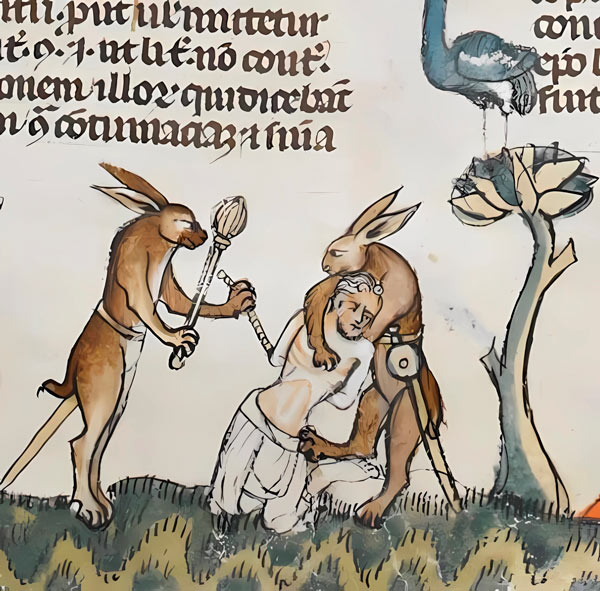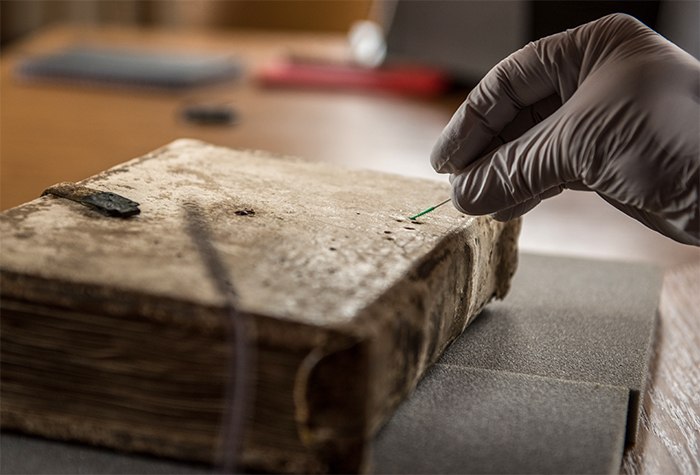Products: Found {{ searchResultsCount }} - Show all
Check if you entered what you are looking for correctly.
Categories: Found {{ categorySearchResults.length }}

Notebook 1945318
Size: (A5) 14,5 x 21 cm
Materials: Spectro recycled leather - Antilope
• Price does not include gemstone fitting
• Checkered 72 Sheets
• Impregnated leather - does not absorb water

As a side note...
Medieval manuscripts were massive books on religious, political or legendary subjects, made of wood and parchment. They were written and illustrated by monks called scribes. The manuscripts are known for their rich ornamentation. The most famous and interesting are the so-called marginalia, funny drawings in the margins. The most bizarre are called drolleries.
The monks really let their imaginations run wild! They depicted anthropomorphic animals as knights fighting in tournaments or as perpetrators brutally threatening people (e.g. by decapitation), and the scribes were particularly fond of rabbits. Apparently, the portrayal of such a cute and harmless animal as a human torturer appealed to the medieval sense of humour (yes, we're thinking "Monty Python and the Holy Grail" here, too!). Monks also indulged their other fantasies. It is therefore surprisingly common to find marginalia of an erotic nature, even in religious books.
But that's just an a side note...

Kiss of the monk
An article by Ann Gibbons entitled "Goats, bookworms, a monk's kiss. Biologists reveal the hidden history of ancient gospels" was published in the journal Science in 2017. It describes research carried out by an international team of scientists at the Oxford Library. A large number of samples were taken from medieval books. Leather samples were used to identify the animals from which they were made (the aforementioned goat was a surprise). Thanks to the DNA of the woodworms, the exact age of the manuscripts was determined.
Most interesting, however, are the DNA results from the monks themselves. The books were read repeatedly, touched with saliva-slicked fingers to turn the pages - hence the wealth of genetic material left behind. It was possible to identify which texts were read more often and which were less enjoyed. The scientists also discovered the genetic material of many microbes present when people coughed or sneezed. This will add to our knowledge of the diseases of the time. There were also some interesting surprises. For example, a very significant amount of DNA from one particular person was found on a page depicting Christ on the cross. This page was repeatedly kissed by a Dutch monk, according to what has been discovered. Scientists say that further genetic analysis could reveal information such as his diseases, eye colour or hair colour.
(Image: Science.org).









